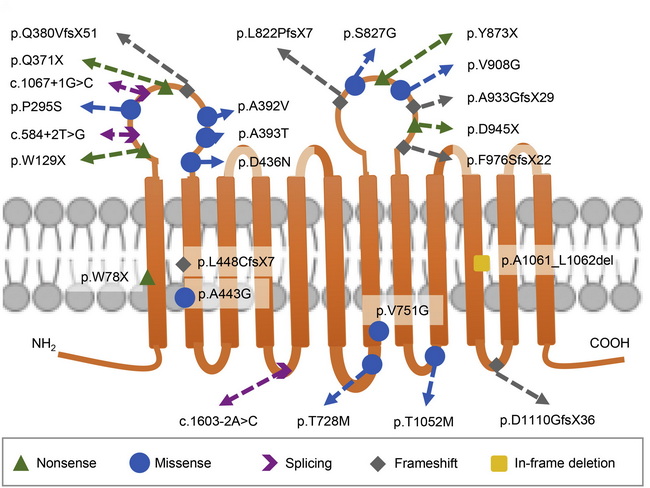Gorlin-Goltz Syndrome: Genetics


Comments:
Gorlin-Goltz syndrome results from germline mutations in three tumor suppressor genes in the sonic hedgehog (SHH) pathway. The most frequently involved is PTCH1 (9q22.32) and less commonly PTCH2 (1p34.1) and SUFU (10q24.32). PTCH1 encodes a 12-domain transmembrane receptor. The sites of various mutations detected in this protein so far are depicted in the diagram. Spontaneous mutations account for 20-30% of cases. SHH signaling pathway is an important regulator of cell proliferation, cellular differentiation, and tissue polarity. It plays a key role in the development of neural tube (including neural patterning), pharyngeal pouches, somites, and limb buds. Dysregulation in SHH pathway results in numerous abnormalities mentioned in the previous image, including tumorigenesis. Image source: Zhong W et al. Identification of rare PTCH1 nonsense variant causing orofacial cleft in a Chinese family and an up-to-date genotype-phenotype analysis. Genes and Diseases, Vol. 8, Issue 5, Sept. 2021, pages 689-697; used under Creative Commons NonCommercial License.



